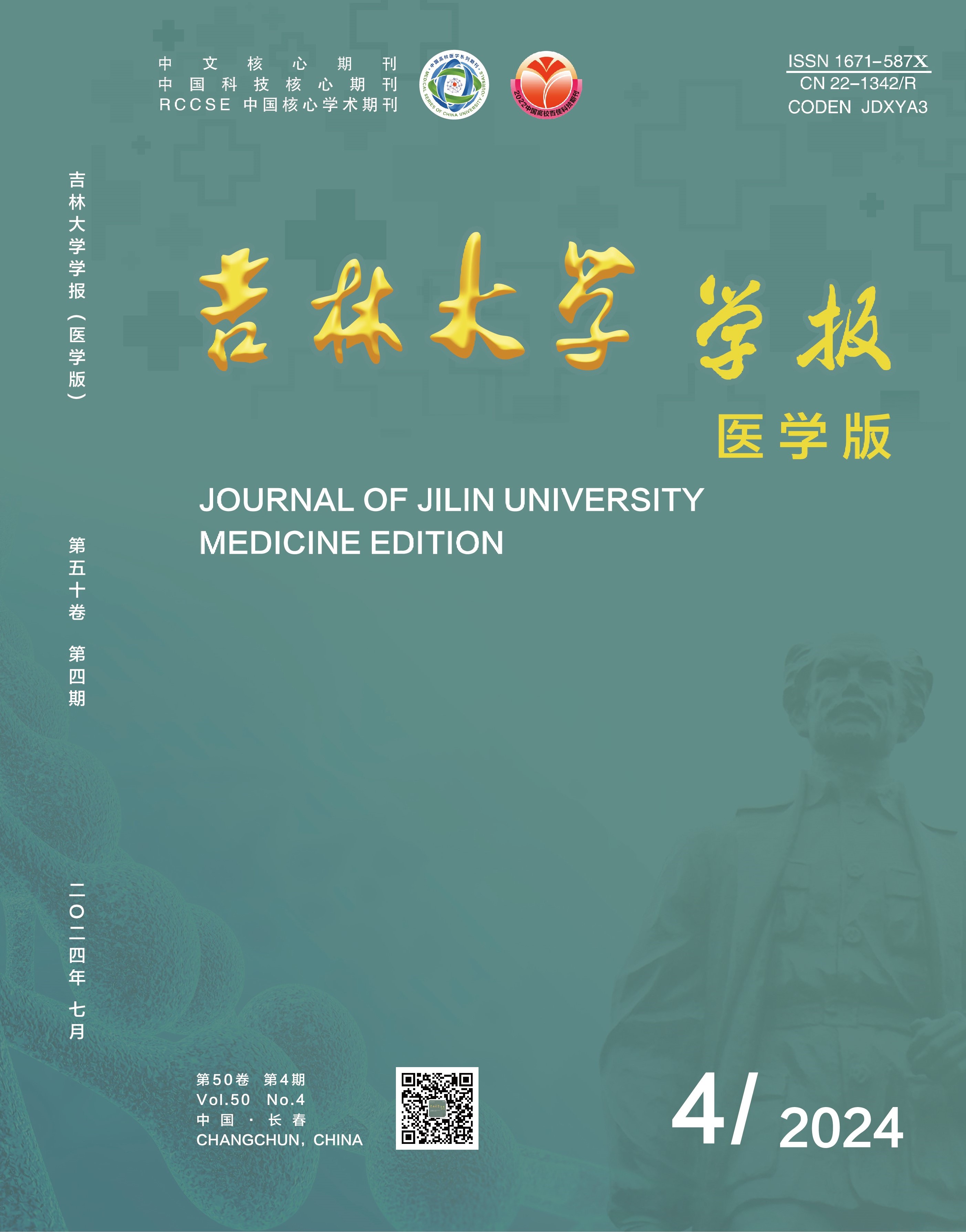Objective To investigate the expression of squamous cell heat shock protein 53(CRNN) in esophageal squamous cell carcinoma(ESCC), and toevaluate its impact on the biological behavior of ESCC cells Eca9706. Methods Immunohistochemical method was used to detect the expression of CRNN protein in 93 ESCC tissues and 101 normal esophageal epithelial tissues adjacent to cancer,and the associations of CRNN expression levels with the clinical pathological characteristics and survival prognosis of ESCC patients were analyzed. Receiver operating characteristic(ROC) curve was used to analyze the predictive performance of CRNN expression level on ESCC. The Eca9706 cells were divided into control group and CRNN group (overexpression of CRNN). Cell counting kit-8(CCK-8) assay was used to detect the proliferation activities of Eca9706 cells in two groups; Transwell chamber assay was used to detect the numbers of migration cells of Eca9706 cells in two groups; plate clone formation assay was used to assess the numbers of clone formation of Eca9706 cells in two groups; flow cytometry was used to detect the apoptotic rates of Eca9706 cells in two groups. Results Compared with adjacent normal esophageal epithelial tissue, the expression intensity of CRNN protein in ESCC tissue was significantly decreased (χ2=23.476, P<0.001). The downregulation of CRNN protein expression in ESCC patients was associated with tumor location(χ2=5.353, P=0.021) and histological grade (χ2=4.434, P=0.035), but not with age(χ2=0.102, P=0.750), gender(χ2=0.050, P=0.822),tumor stage (χ2=0.047, P=0.828) or lymph node metastasis (χ2=0.553, P=0.457). Survival analysis showed that ESCC patients in high expression of CRNN protein group had better prognosis than those in low expression of CRNN protein group (P=0.013). Univariable Cox proportional hazards regression analysis showed the associations between overall survival rate in ESCC patients and the expression level of CRNN protein [hazard ratio (HR)=0.198,95% confidence interval (CI): 0.047-0.842,P=0.028] and tumor stage(HR=2.479,95%CI:1.247-4.929,P=0.010). Multivariable Cox regression analysis showed that the expression level of CRNN protein (HR=0.213,95%CI: 0.050-0.895, P=0.035) and tumor stage (HR=2.391, 95%CI: 1.198-4.772, P=0.013) were independent factors for the prognosis of ESCC. Compared with control group,the proliferation activity of cells in CRNN group was significantly decreased (P=0.004), the number of clone formation was decreased (P=0.002), the number of migration cells was decreased (P=0.002), and the apoptotic rate was significantly increased (P=0.006). Conclusion Low expression level of CRNN protein suggests poor prognosis for the ESCC patients. Overexpression of CRNN may inhibit the proliferation,migration and invasion abilities of ESCC cells,and promote their apoptosis.

 Table of Content
Table of Content
 Guide to Authors
Guide to Authors


